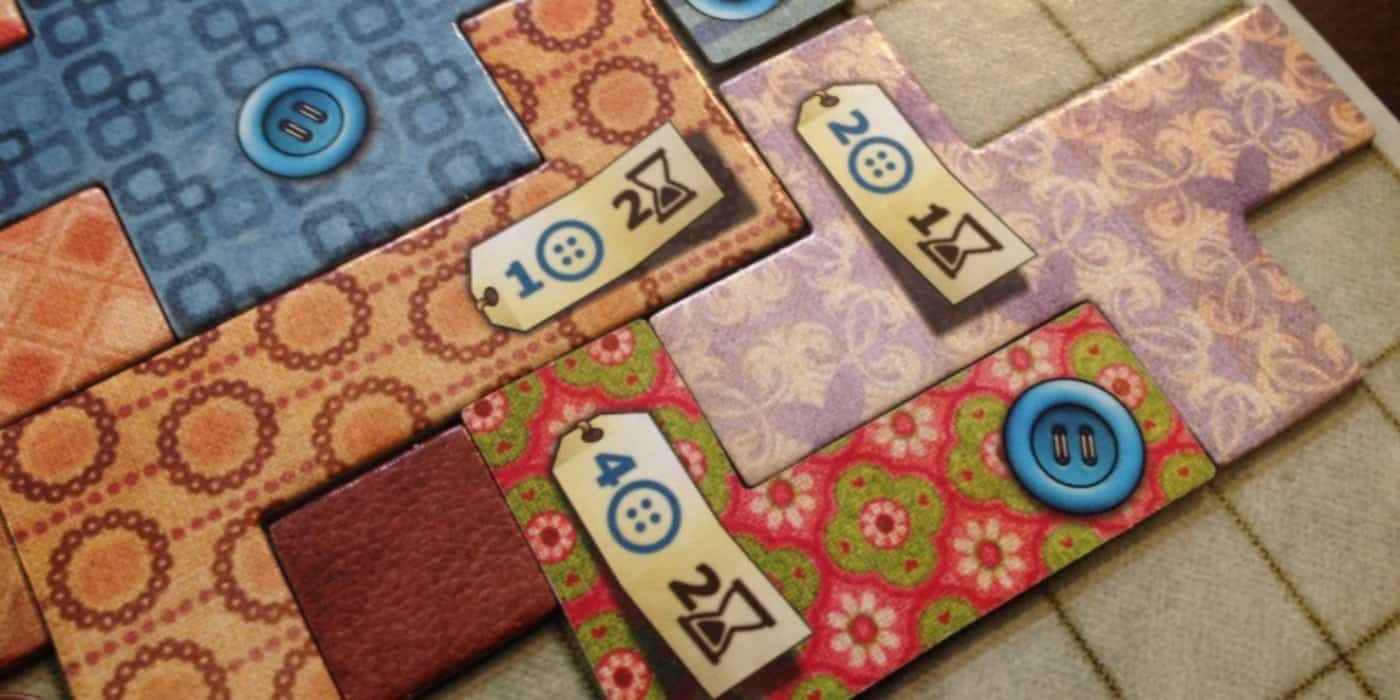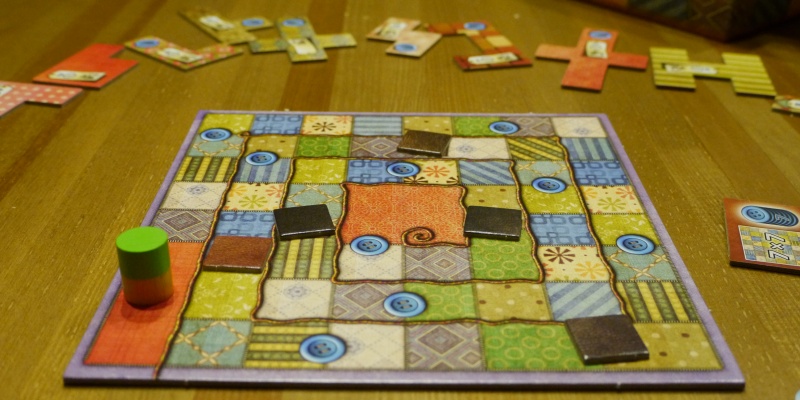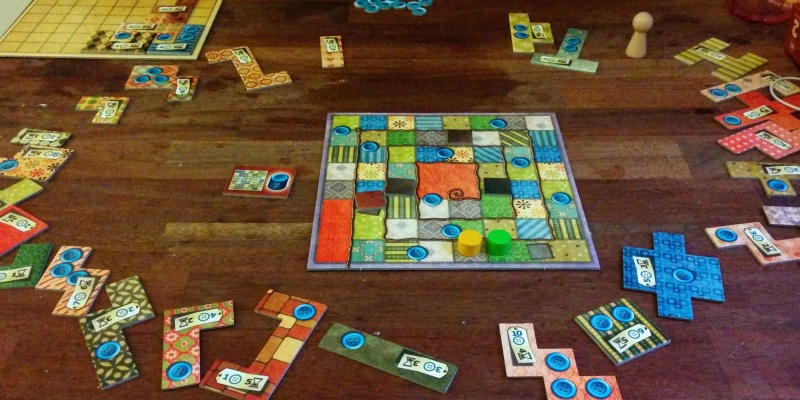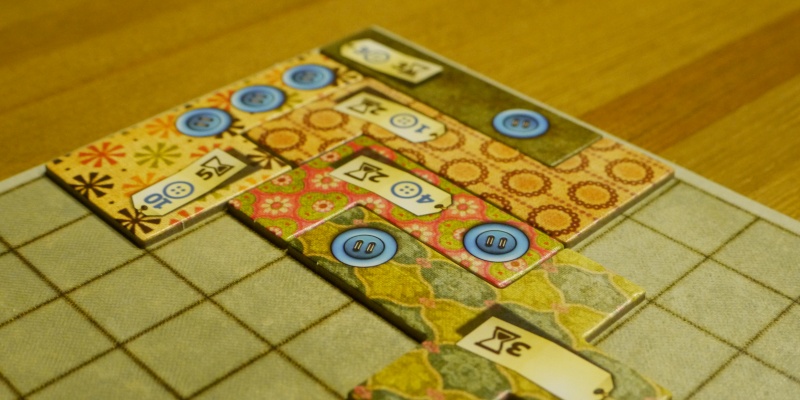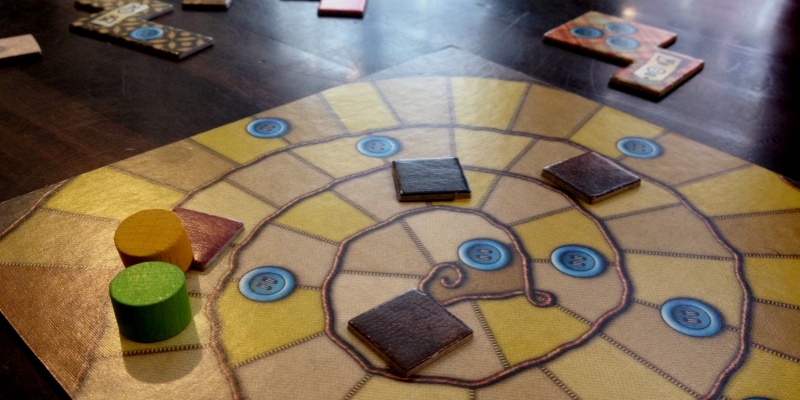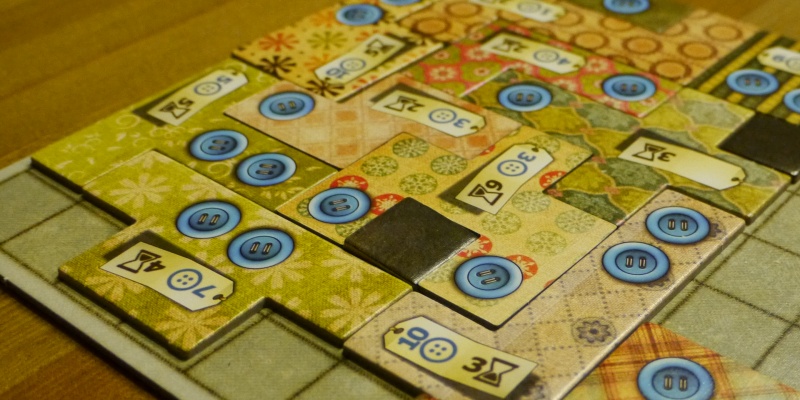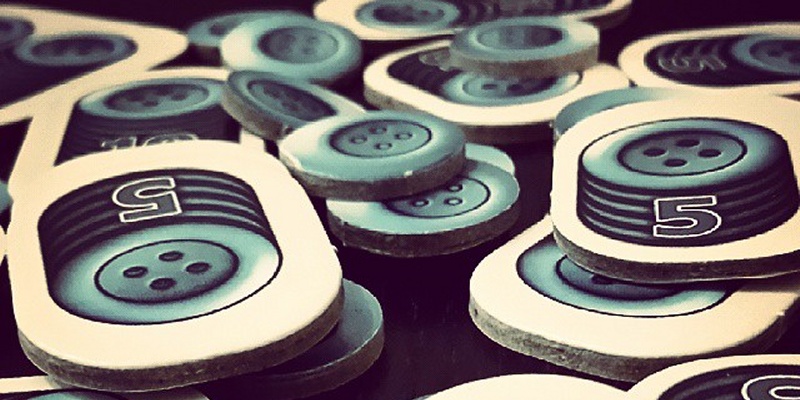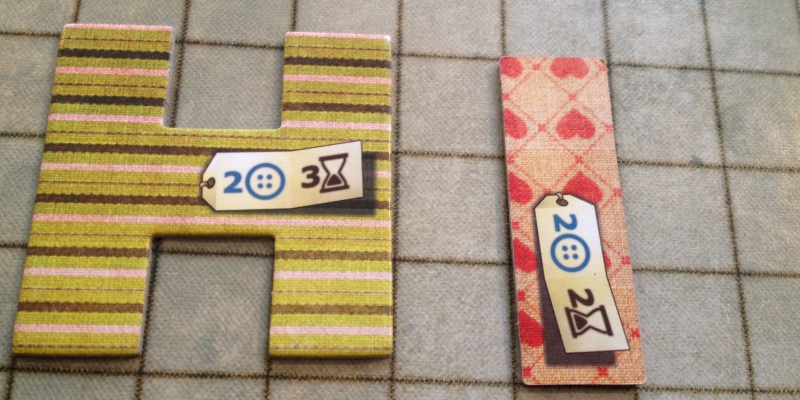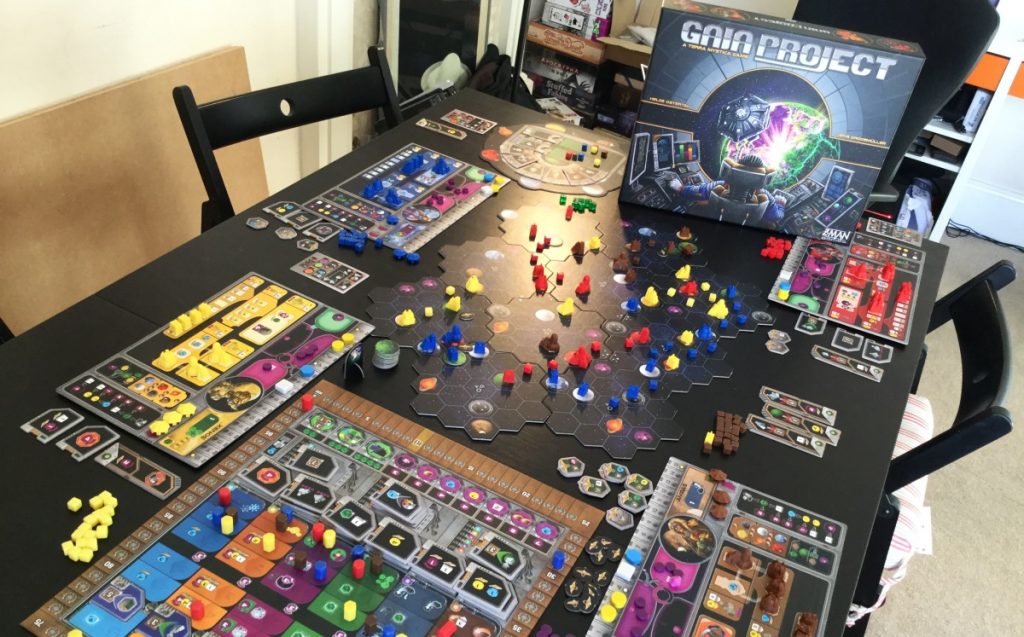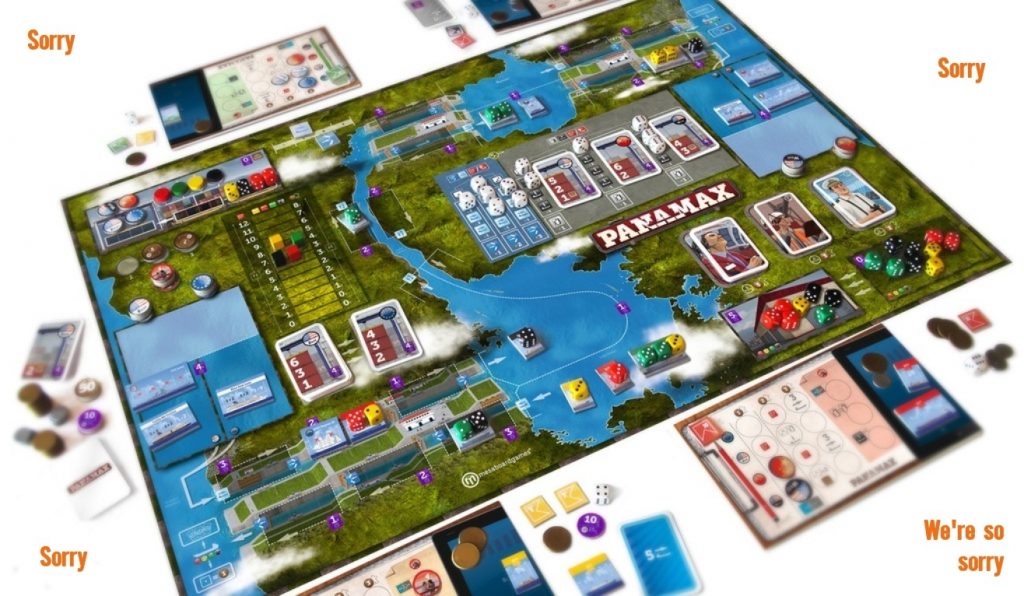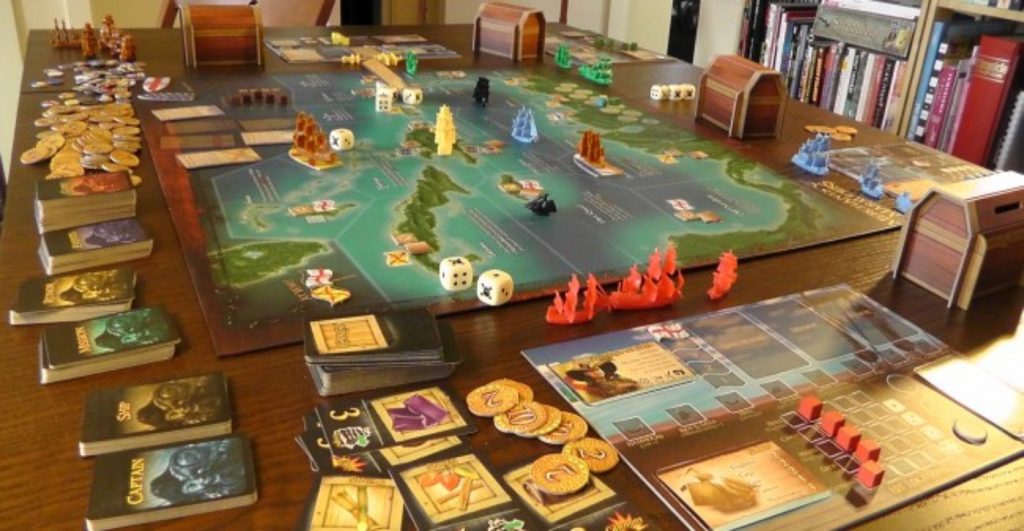Paul: True story: I got in trouble for sewing once when I was six years old. I wasn’t supposed to be sewing because, apparently, sewing is not a thing that a man does. That seems a little strange since I have definitely met some tailors who were men and whose helpful craft meant I wasn’t instead stumbling naked through life. Anyway, being thus steered from sewing surely explains why I’m not as good as I should be at Patchwork.
And it’s such a shame because I want to be better at it. I’m sure I could. I’m certain I’m on the verge of some sort of needlework breakthrough, of a real understanding of petite, precise Patchwork. I cannot stop now. I must master this splendid, splendid challenge. This flat, unassuming and apparently drab affair is so much more than it seems. Do not underestimate its prosaic presentation.
Patchwork is one of those games that’s perfectly engineered for just two players, no more and no less. One player is too few, a single person who’s loneliness means they will never understand the delights of a Patchwork pairing. Three players is too many. I’m sad to say that third wheel will be nothing but an obstacle to your Patchwork pleasure and the humane thing to do is kill them now, as quickly and decisively as possible. Don’t worry, it’s worth it.
You and your Patchwork partner have just one objective. That objective is to fill your own personal grid as best you can by carefully, cleverly, slotting together fabric fragments before time runs out. Time is measured by player tokens that slowly spiral their way toward the centre of the main board. Points are scored according to however many buttons, the game’s cute currency, you happen to have when it’s all over. Points are lost for any squares on your player grid that remain naked. Get buttons. Cover squares. That’s Patchwork. It’s simple.
Oh God, it’s not. You can already tell from the pictures that just slotting all these disparate pieces together would be enough of a challenge by itself, but that’s not the only thing you have to contend with. That’s the least of your worries.
First of all, these pieces are laid out randomly in a gigantic circle around the main board. A marker figure hops around them in clockwise fashion. On your turn, you choose whether to land on and claim the first, second or third piece ahead of the marker. Good for you. You get that piece. It goes anywhere you like on your grid, rotated for your pleasure. It probably doesn’t fit very well. None of them fit very well. It’s a disaster. It’s a constant disaster.
That piece of fabric cost a certain amount of buttons so, of course, you only bought it if you could afford it. It also cost you a certain amount of time units and your player token hops forward that many spaces on the main board. Whosoever has their token in last place goes next. That might’ve just been you. That might be you again. Get fabric. Move tokens. That’s Patchwork. It’s simple.
Oh God, it’s not. Every piece is unique. Every piece has a different cost in both buttons and also time. The cost in time isn’t necessarily a bad thing, since leaping forward propels you toward more buttons and leather. If you can reach one of the main board’s leather squares before your opponent, you get to grab it and add it to your grid. These uncomplicated shapes are perfect for filling the many holes you’re likely to have. Also, every time you cross a button on the main board, you get additional income according to the number of buttons you have on the fabric pieces you’ve been collecting. Wait, you have been snapping up the pieces that had buttons on them, right? Get leather. Get income. That’s Patchwork. It’s simple.
Oh God it’s not. The other player is a jerk. They can see your board, they can see your buttons and they can see what you need next. They can jump the marker over a piece you really wanted, or set you up so that, when your turn comes, the three pieces available are all the wrong shape or cost too much or just suck. Every move they make directly affects what you can or can’t do next. But, you know what? You can at least do the same. You can have your revenge.
Be careful, there’s more to consider. While whoever’s behind isn’t likely to snatch any leather, being in last place has very distinct advantages. Not only does it mean you might be able to grab multiple flaps of fabric as you gradually catch up with the other player (maybe you snatch ones that only move you one or two spaces a time and maybe this nets you a bunch), the trailing player can also choose to use the gap between them and the leader to earn money. Leaping forward to catch up nets one income per space, making it a quick and easy way to earn a bevy of buttons. If this move happens to coincide with crossing a button on the board, it also triggers more income. It might well set you up for some wonderful opportunities on your next turn.
Don’t you dare set your opponent up for wonderful opportunities. You’ll regret it.
Everywhere I’ve been lately I’ve seen people talking about Patchwork. I’ve seen discussions amongst friends, discussions in game cafés, discussions in comments sections, discussions on Twitter. Patchwork is bobbing like a buoy in up and down The Hotness on BoardGameGeek and it deserves all the attention it’s had.
It’s such a tight, precise and finely chiselled design, a bonsai of a game that has been expertly sculpted so that everything you do, from turn to turn, is intimately connected to everything else, has a direct and immediate impact on both you and your opponent. At the same time, this isn’t a game that demands chess-like foresight or calculation, since your position is always changing. Instead, you need to be adaptable, as that wee token skips around an ever-decreasing spiral of fabric pieces, it constantly presents new situations and new opportunities. This also means it’s difficult to really dig yourself into a hole, to find your mistakes have pushed you into an inescapable corner. Patchwork isn’t easy, but it is at least forgiving.
That said, if I had a criticism or two (and boy, I don’t have many here), it would be that the game’s special bonus token, which gives you extra points if you’re the first player to create a whole seven by seven section of fabric on your grid, is too bountiful a boon. If you’re already filling in that much of your board that expertly, you probably don’t need even more points for your efforts. I’d also like to see a few more fabric pieces or possibly board variations to choose from. Patchwork comes with a double-sided board which has different designs on each side, but the differences are only cosmetic. I’m sure the layout was very carefully considered, but could we maybe not just have a distinct alternative, if we’re going to print something else with the other side?
Oh, and I suppose it’s also an abstract puzzle game that will only entertain two players. That, immediately, is going to turn some of you off. I want to say that I thoroughly, thoroughly recommend you buy or at the very least try Patchwork, but maybe you already know it’s just not for you, eh? Eh?
Still, it’s a wonderful duel of constant puzzling that, while it plays nothing like Love Letter, kept reminding me of that game’s distilled design. It’s so quick (games can be just fifteen minutes), it’s so smart, it’s so easy to learn and yet it’s so hard to master.
No, screw what I said above. You should buy it anyway. You really should. You know why? Because I didn’t want to try a two-player abstract puzzle game either, but now I want to wrap myself up in this, all snug and warm.
Hooray! I got through all of that without mentioning Tetris.
God bless the rights-free images repository on BoardGameGeek, as so many of the photos I took for this review were unusable.

